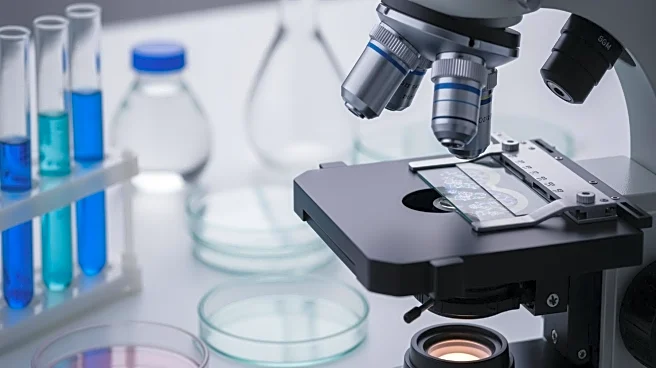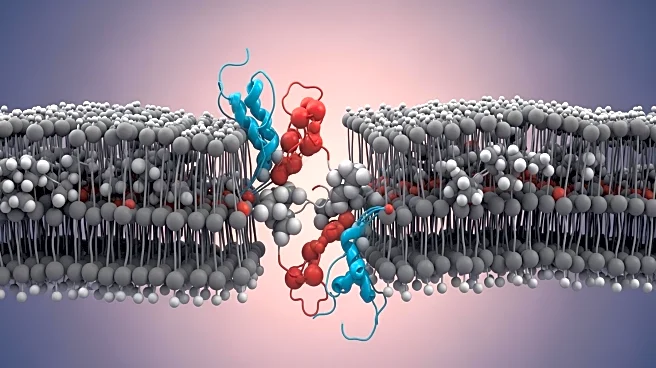What's Happening?
A study published in Nature has characterized amyloid fibrils isolated from the heart of a cardiac amyloidosis (CA) patient using cryogenic electron microscopy (cryo-EM). The research identified twisted
dimeric fibrils derived from apolipoprotein A-IV (ApoAIV) and transthyretin (TTR) in the patient's heart. The study provides detailed structural information on these fibrils, which were extracted and purified from the patient's myocardium. The findings offer new insights into the molecular structure of amyloid fibrils associated with CA.
Why It's Important?
Understanding the structural characteristics of amyloid fibrils in cardiac amyloidosis is crucial for developing targeted treatments. The study's findings could lead to improved diagnostic methods and therapeutic strategies for CA, a condition that affects heart function and can lead to heart failure. By revealing the molecular structure of amyloid fibrils, researchers can better understand the disease's progression and identify potential intervention points.
What's Next?
Further research may focus on exploring the therapeutic implications of these structural insights. Scientists could investigate how these findings can be applied to develop new treatments for cardiac amyloidosis and related conditions. Additionally, studies might examine the broader impact of amyloid fibril structures on heart health and their role in other amyloid-related diseases.
Beyond the Headlines
The study highlights the importance of advanced imaging techniques like cryo-EM in understanding complex biological structures. It underscores the potential of structural biology to uncover detailed information about disease mechanisms, paving the way for innovative approaches to treatment and diagnosis.











